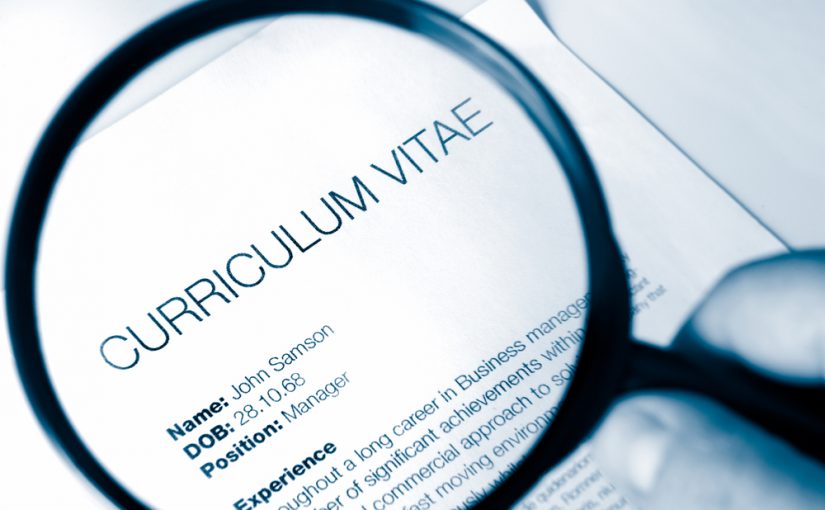Your personal statement on your CV should be an attention getter and a way to summarize your interest in the job and what your status is in terms of skills and experience relative to how they match the job you are applying to. As usual, your personal statement will have to stay relevant to the job you are applying for when describing this. But the personal statement is a way to give the recruiter a sense of what they are in for for the rest of the CV/Resume and cover letter.
Your personal statement should not be confused with your cover letter. The former is usually a short statement at the beginning of your CV or Resume. Your cover letter is a separate letter, usually addressed to the firm, with more information about your motivations, why you are ideally suited for the job and demonstrating your ability to communicate.
The goal of your personal statement is thus a way to attract attention and deliver information so that the reader wants to read the CV. It is also known as a career objective, professional profile or attention getter. It is also not to be confused with a personal statement for a university application which is usually longer and in prose. You can learn about cover letters in more detail here. With our CV templates though you will immediately be able to see what a good personal statement looks like.
How to write a personal statement in a CV
Your first step of writing a personal statement should be to write a sentence about yourself that describes you. This should be done in adjectives that resemble the key words. These keywords have to explain the important skills that you are looking for, and alongside them include experience that shows them that you acquired that experience. You can also include prizes and
The next few sentences of your personal statement are about your intention in soliciting for the job you are applying for. It is really about highlighting why this is the next logical step in your career. It should not be an overstatement of some sort but rather using the experience cited in your first paragraph to justify this move. If you are trying your luck in a different sector, highlight this in your opening statement, acknowledging that you have different experience in one sector but not the others.
Where do you put your personal statement in your CV?
Your personal statement should be at the top of your CV. It should stand out as it will likely be the first thing the recruiter will want to read to get a brief summary of who you are. Your personal statement should include attention getters. Attention getters are words or fragments of phrases that will make your CV reader want to read on.
Examples of attention getters include :
- An achievement or prize relevant the job you are applying to : “As someone who delivered an 18% increase in sales in my last job, I am ready to take on a new challenge in your company“
- A fragment of text describing your personal situation at the moment of writing, with keywords : “Recent and highly motivated graduate of Political Science with experience in multidisciplinary research, presentation skills and charisma”
An original statement that the recruiter makes take notice of due to its direct nature, while maintaining professionalism.
In terms of formatting, you want your personal statement to be the same font and size as your plain text in your CV, although our templates have that set to default. Your personal statement should not necessarily take up more space than any other part. If anything as the most brief and least analyzed part of your CV or Resume, it serves as a summary of sorts.
Your personal statement will also include your top keywords that you use to describe your Professional Experience. You can see our guide to using keywords in our main article about how to write your CV and you can download examples of CVs from our website to see how we use keywords to sum up our skills in an effective, professional way.

Shutterstock | GaudiLab
What are the differences between a personal statement and a cover letter?
A personal statement is only a few sentences that are meant to be a career summary or a statement of intent in terms of your goals and mission. It explains your plan of action in the context of your previous career and your aspirations. It is also put at the start of your CV or thereabouts.
A cover letter will be longer, around three paragraphs. The cover letter aims to outline your motivations; what you bring to the table that is not mentioned on your CV; and lastly highlight your key strengths and motivation in the last paragraph. This last paragraph will actually resemble your personal statement on your CV in many ways. But the main goal of a cover letter is multifaceted : it allows you to show you can write prose; it allows you to include information and build narratives that your CV might be more concise in; And it allows you to add more personal aspects that you left out in your CV.
There is a trick to keep in mind in terms of style between your personal statement and your cover letter. You should be able to read your cover letter out loud as a piece of prose. Whereas your personal statement is much less tonally relevant.
Do’s and Don’ts in your Personal Statement
DO
- Try to write in phrase fragments rather than full prose to save space
- Be brief as you will likely have a cover letter or motivation statement to elaborate on further
- Highlight your current employment situation and years of experience
- Look to have an attention getter by starting with your core achievements.
DON’T
- Address the reader informally, or use casual language and prose when writing your personal statement on your CV. You can afford to be slightly more informal in your cover letter
- Write in prose unless you are brief. You can use fragmented language in your personal statement.
- Highlight unnecessary information about yourself, especially personal.
- Add your salary expectations. If they ask you to add salary expectations, you usually put this in your cover letter. Do not put it in your personal statement.
Once you finish re-read your personal statement and check for any spelling or grammar mistakes. Remember to use some of our CV templates, most of which have a dedicated area for your personal statement.

